#galaxy lightman
Note
What are everyone's favorite type of soup?
zach: gumbo or tomato soup. cant decide lol
pyro: BROCCOLI CHEDDAR!!!1!!!! >:)
galaxy: miso soup is really good
dorsal: uhhh vegetable maybe? probably a good pot roast...this is just making me hungry ;-;
0 notes
Text
got a couple more books in the mail
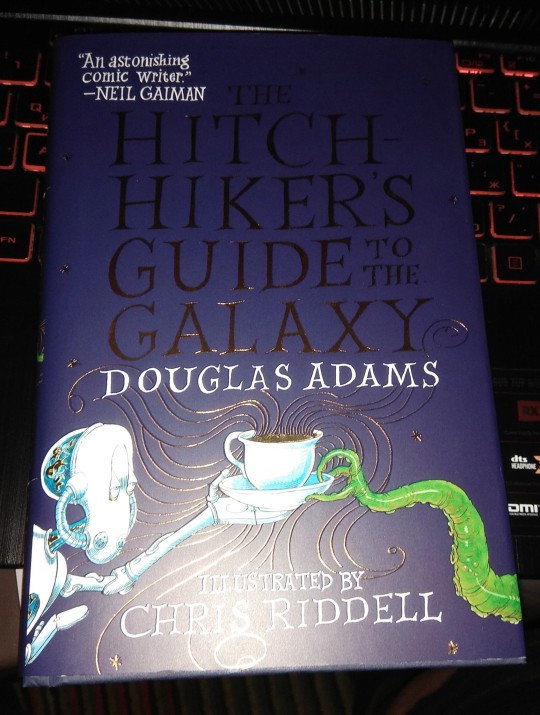

got this one specifically for Chris Riddell's illustrations (that and i never owned any edition of this book) i was browsing his work trying to distract myself from waiting impatiently for my deck of his Paths 🎴
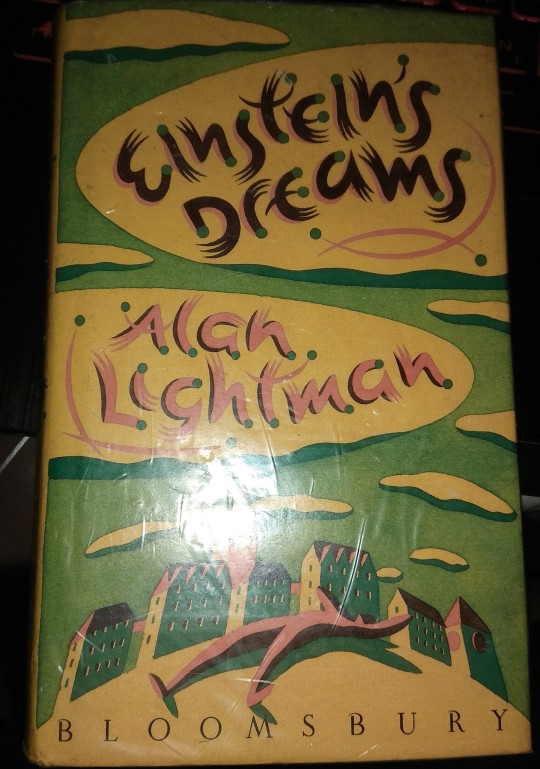
well after i finally listened to the audiobook of Einstein's Dreams, i went ahead and read a digital copy and then went to abebooks and found this little one to put on my shelf
i also got Alan Fletcher's Picturing and Poeting, but much like his Art of Looking Sideways, it's difficult (for me) to explain
#books#the hitchhiker's guide to the galaxy#douglas adams#chris riddell#einstein's dreams#alan lightman
5 notes
·
View notes
Text
I was tagged by 2 awesome people on here! @dandysnob and @wizzardclown . Thank you soooo much!! ❤️
Rules: Name one of your movie, character, animal, drink, song, season, book, color and hobby.
*Movie: Guardians of the Galaxy
*Character: Cal Lightman
*Animal: Raccoon
*Drink: Clearly Canadian sparkling water country raspberry
*Song: Ich Will by Rammstein
*Season: Summer
*Book: Girlfriend In A Coma by Douglas Coupland
* Color: Black
*Hobby: Writing
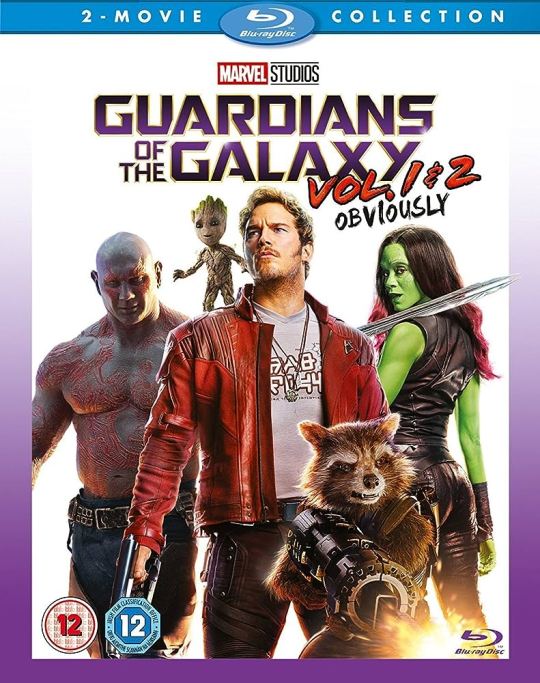








I am tagging: @secrethunderstorm @frostlikeashes @imtheeggman2 @ashifloof @renegadedoughnut and whoever else wants to try it!
12 notes
·
View notes
Text
Who / what fandoms I write for
Here's a list of the fandoms and the characters within said fandom I write about.
The characters listed will be the whumpees in the imagines I write. The caretaker does not specifically have to be on this list, but can be anyone from the same fandom (if you have a preference, please specify with your request).
Want to send in your request? I am currently only taking requests from my prompts list, which you can find here and you can also send in your request through there.
A
A-Team (movie): Face, Murdock
Aladdin (live action movie): Aladdin
American Assassin: Mitch Rapp
Avengers / Marvel: Ant-Man/Scott Lang, Captain America/Steve Rogers, Doctor Strange/Stephen Strange, Hawkeye/Clint Barton, Loki, Thor
B
The Batman (2022): Bruce Wayne
The Blacklist: Donald Ressler
Bullet Train: Tangerine
C
Criminal Minds: Spencer Reid
CSI: Greg Sanders, Nick Stokes
CSI NY: Danny Messer, Don Flack, Adam Ross
D
Dune: Paul Atreides
F
Fantastic Beasts and Where to Find Them: Newt Scamander, Theseus Scamander
G
Game of Thrones: Jon Snow, Robb Stark
Guardians of the Galaxy: Peter Quill
H
Hannibal (tv series): Will Graham
The Hobbit: Fili, Kili, Thorin, Thranduil
I
Inception: Arthur
J
James Bond (Daniel Craig era): James Bond, Q
Jurassic World: Owen Grady
Justified: Raylan Givens, Tim Gutterson
K
Kingsman: Eggsy Unwin
L
The Last of Us: Joel Miller
Lie to Me: Cal Lightman, Eli Loker
Lord of the Rings: Aragorn, Faramir, Legolas
M
MacGyver: Angus MacGyver
Maze Runner: Newt, Thomas
N
Now You See Me: Daniel Atlas
O
Olympus Has Fallen / London Has Fallen: Mike Banning
Our Flag Means Death: Ed Teach/Blackbeard
P
Pride + Prejudice + Zombies: Mr. Darcy
Prodigal Son: Malcolm Bright
The Purge (movies): Leo Barnes
S
Shadow & Bone / Six of Crow: Kaz Brekker, Jesper Fahey, Wylan van Eck
Sherlock (BBC): Sherlock Holmes
Star Trek (2009): Jim Kirk, Spock
Spiderman (Tom Holland era): Peter Parker
Star Wars: Poe Dameron
Supernatural: Dean Winchester, Sam Winchester
T
Top Gun Maverick: Rooster/Bradley Bradshaw, Hangman/Jake Seresin
U
Uncharted (movie): Nathan Drake
W
Walking Dead: Daryl Dixon, Rick Grimes
Wonka: Willy Wonka
X
X-Men: Charles Xavier, Hank McCoy
#fanfiction#fanfic#whump#whump fanfiction#whump imagines#who I write fo#top gun maverick#moon knight#mandalorian#the last of us#uncharted#walking dead#sherlock#our flag means death#911#avengers#fantastic beasts and where to find them#the hobbit#hannibal#shadow and bone
11 notes
·
View notes
Text
Twinkle, Twinkle, Little Star... Ada and the Galaxies
Twinkle, Twinkle, Little Star... Ada and the Galaxies @candlewick @MITKidsPress
Ada and the Galaxies, by Alan Lightman & Olga Pastuchiv/Illustrated by Susanna Chapman, (Sept. 2021, MIT Kids Press), $17.99, ISBN: 9781536215618
Ages 4-8
Author and physicist Alan Lightman, together with author Olga Pastuchiv, create a story about stars, galaxies, and the natural world, perfect for stargazers and astronomy fans. Ada is a young girl visiting her grandparents, Ama and Poobah, in…

View On WordPress
#Ada and the Galaxies#Alan Lightman#Candlewick Press#galaxies#Hubble Telescope#MIT Press#nature#Olga Pastuchiv#space#stars#Susanna Chapman
1 note
·
View note
Text

Active muses are given priority. This is subject to change at any time.
TEST MUSES
These are muses I’m trying out before officially adding them to my roster. If they end up not working for me, they’ll be removed. As such, be aware that test muses might only be here on a temporary basis.
Rocket Raccoon. (Guardians of the Galaxy).
MISC
Count Dracula. DORMANT.
Malcolm Tucker. DORMANT.
Aziraphale. DORMANT.
Villanelle. DORMANT.
Elise Rainier. DORMANT.
Cal Lightman. DORMANT.
Hector Barbossa. DORMANT.
Harry Potter. ACTIVE.
THE HUNGER GAMES
Haymitch Abernathy. DORMANT.
Katniss Everdeen. ACTIVE.
HANNIBAL
Hannibal Lecter. DORMANT.
Abel Gideon. ACTIVE.
ELEMENTARY
Sherlock Holmes. DORMANT.
MARVEL
Taneleer Tivan. DORMANT.
Peter Quill. DORMANT.
STRANGER THINGS
Billy Hargrove. DORMANT.
THE UNDERLAND CHRONICLES
Gregor the Overlander. DORMANT.
Ripred. DORMANT.
6 notes
·
View notes
Text
Reading List 2019-2020
HISTORICAL FICTION
Girl in the Blue Coat - Monica Hesse
The War Outside - Monica Hesse
The Things We Cannot Say - Kelly Rimmer
The Point of Light - John Ellsworth (along with the rest of the series)
We Must Be Brave - Frances Liardet
In Another Time - Jillian Cantor
Black Dove, White Raven - Elizabeth Wein
The Berlin Boxing Club - Robert Sharenow
The Divided Sky - Christa Wolf (yes, the one I’ve been ranting about for literal months)
Rose Under Fire - Elizabeth Wein (read Code Name Verity first)
Circe - Madeline Miller
Song of Achilles - Madeline Miller
Schindler's List - Thomas Keneally
Catch 22 - Joseph Heller (however heavily satirical)
The Gentlemans Guide to Vice and Virtue - Mackenzi Lee
The Lady's Guide to Petticoats and Piracy - Mackenzi Lee
Front Lines - Michael Grant
Johnny Got His Gun - Dalton Trumbo
NONFICTION
Blink - Malcolm Gladwell
Opening Skinner’s Box - Lauren Slater
The History of the Ancient World - Susan Wise Bauer
Sapiens: A Brief History of Humankind - Yuval Noah Harari
Second-Hand Time - Swetlana Alexandrowna Alexijewitsch
Resisting Happiness - Matthew Kelly
Czar's Madman - Jaan Kross
The Hero with a Thousand Faces - Joseph Campbell
A Concise History of the Baltic States - Andrejs Plakans
The Ascent of Gravity - Markus Chown
The Russian Revolution - Anthony Wood
YA LITERATURE
The Secret Garden – Frances Hodgson Burnett
Pippi Longstocking - Astrid Lindgren
Six of Crows - Leigh Bardugo
Annie on my Mind - Nancy Garden
The Impossible Knife of Memory - Laurie Halse Anderson
Aristotle and Dante Discover the Secrets of the Universe - Benjamin Alire Saenz
Exit, Pursued by a Bear - EK Johnson
The Bees - Laline Paul
All the Bright Places - Jennifer Niven
SCIENCE FICTION
Da Vinci Code - Dan Brown
The Time Traveler's Wife - Audrey Niffeneger
The Hitch Hiker’s Guide to the Galaxy – Douglas Adams
Fahrenheit 451 - Ray Bradbury
POLITICAL/CONTROVERSIAL THINGS
1984 - George Orwell
Vox - Christina Dalcher
Nietzsche Reader - Friedrich Nietzsche
Ethics in the Real World - Peter Singer
Books v. Cigarettes - George Orwell
NOVELS
North and South - Elizabeth Gaskell
The Secret History - Donna Tartt NOVEL
The Picture of Dorian Gray - Oscar Wilde
Einstein's Dreams - Alan Lightman
Blindness - José Saramago
MISC
The Age of Innocence - Edith Wharton
Macbeth - William Shakespeare
The Hatred Of Poetry - Ben Lerner
Nothing - Janne Teller
Reconstructing Amelia - Kimberly McCreight
Incarnadine - Mary Szybist
Yougo Senki - Carlo Zen
Othello - William Shakespeare
#reading list#how do you tag these things#I told you it was mostly his fic#it's what i like to read okay#learning history with a plot is my favourite way#and there are a few of these i'll have to read for school anyway#also there is one#1#manga#and it's historical fantasy with magical girl hitler#recommended to me by tabs uwo#okay i'll stop tagging this
11 notes
·
View notes
Photo
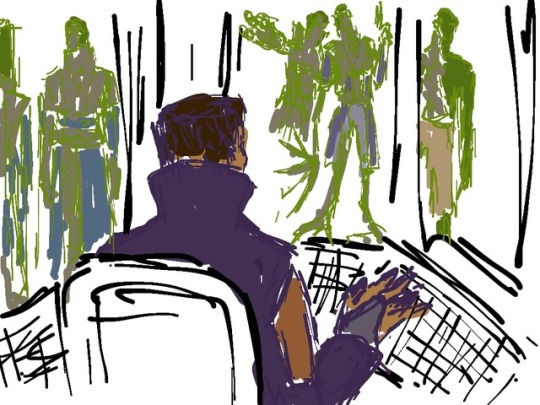


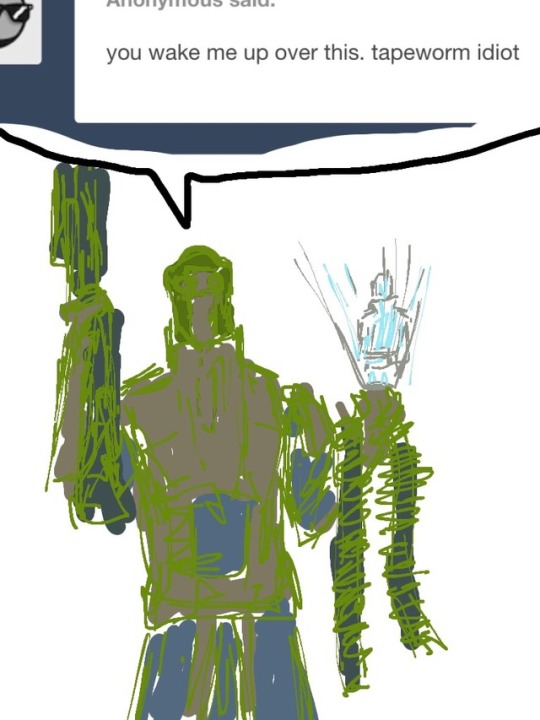

Army Swap Spinoff: Director Slick’s Wretched Quest for a Supertac Chapter 5
In a galaxy where the Confederacy of Independent Systems went super into biotech instead of mass industrialisation, and the Jedi’s secret deal with the Kaminoans fell through so they had to create a different army, the Republic soldiers are droids and the Separatist soldiers are clones.
It’s Director Slick’s own business what he does with his free time, but his underhanded attempts to get a Super Tactical Clone lieutenant are slowly alienating the entire Confederacy of Independent Systems. Kul Teska regularly blackmails him with the details of their one-sided conversations, but his latest attempt didn’t work because everyone was already aware of how much of a deplorable jackass Slick is.
To answer the question, humanity is objectively wrong because the hottest thing in a pressure suit is Lightman.

By Skakoan standards, Wat Tambor would be good-looking if he didn’t destroy his health from spending most of his time off-planet. A direct human comparison would be someone who goes to Mars and constantly has cyanosis and ruptured blood vessels, and it’s only a matter of time before he loses chunks of himself from frostbite and gets permanent brain damage from hypoxia.
All of the dialogue in this series is composed of asks and messages. If you say something interesting, I may draw it. If you say something tasteless and nauseating, you may be immortalised as the dialogue of Director Slick.
#army swap au#army swap spinoff#director slick's wretched quest for a supertac#kul teska#comic#shitpost#anon ask#This is actually fanfiction
10 notes
·
View notes
Text
But I am still. You could say I am locally at rest. I am at rest relative to the center of the earth. But that center is itself in motion.
I try to imagine the “common place” experience of standing exactly at the pole of the earth (even if Peary was not quite there). I see myself perched on a glistening ball in space spinning about an imaginary axis through its center, and I am standing at the precise point where that axis emerges from the interior and punctures the ice. All other points on this ball, except at the opposite pole, are in motion. But I am still. You could say I am locally at rest. I am at rest relative to the center of the earth. But that center is itself in motion. As I stand here, that center hurtles around its central star at a speed of 65,000 miles per hour, and that central star, in turn, revolves around the center of the galaxy, the Milky Way, at a speed of 500,000 miles per hour. Do I know too much, or too little? I look up into space, as the cave dwellers did, and am transfixed by the infinite. Although I cannot touch it, I feel that I’m there. This resting yet unresting pole is quite a spot for viewing the universe.
~ Alan Lightman, Searching for Stars on an Island in Maine (Pantheon; March 27, 2018)
6 notes
·
View notes
Text
Ada and the Galaxies by Alan Lightman and Olga Pastuchiv, illustrated by Susanna Chapman
Ada and the Galaxies by Alan Lightman and Olga Pastuchiv, illustrated by Susanna Chapman
Ada and the Galaxies by Alan Lightman and Olga Pastuchiv, illustrated by Susanna Chapman. MIT Kids Press, 2021. 9781536215618
Rating: 1-5 (5 is an excellent or a Starred review) 4
Format: Hardcover
Genre: Picture book
What did you like about the book? Ada and her single mom are headed to Maine for a visit with her grandparents, who live on an island. Living in NYC, Ada doesn’t have a good…

View On WordPress
0 notes
Note
🎶when you get this, put 5 songs you actually listen to, then publish. Send this ask to 10 of your followers (positivity is cool) 🎶
blog runner ooc:
Lip Up Fatty - Bad Manners
Time Machine - Miracle Musical
The Kill - Joy Division
mylife - Blink 1-16
iSSUE - kaystrueno
zach:
Tone Deaf - Eminem
I Want My Hat Back - Digger
Two Time - Jack Stauber
Put The Money In The Bag - Yuno Miles
galaxy:
4:00 AM - Taeko Onuki
Hey, Mr DJ, I Thought You Said We Had A Deal - They Might Be Giants
You Know How It Is - Kero Kero Bonito
Hello Youth - LONGMAN
space girl - Frances Forever
pyro:
I'm Back Sleeping Or Fucking Or Something - Moss Icon
Fight Till You Die - Pennywise
Take Warning - Operation Ivy
2Tone Army - The Toasters
Die Schwäne Im Schilf - Empyrium
dorsal:
Come Home (Flood Mix) - James
Popscene - Blur
Touch Me I'm Sick - Mudhoney
Walk Out To Winter - Aztec Camera
Starry Eyes - The Records
#music#ask game#debugged#original character#askdebugged#dorsal#zach magma#pyro pelis#asks#galaxy lightman
1 note
·
View note
Photo







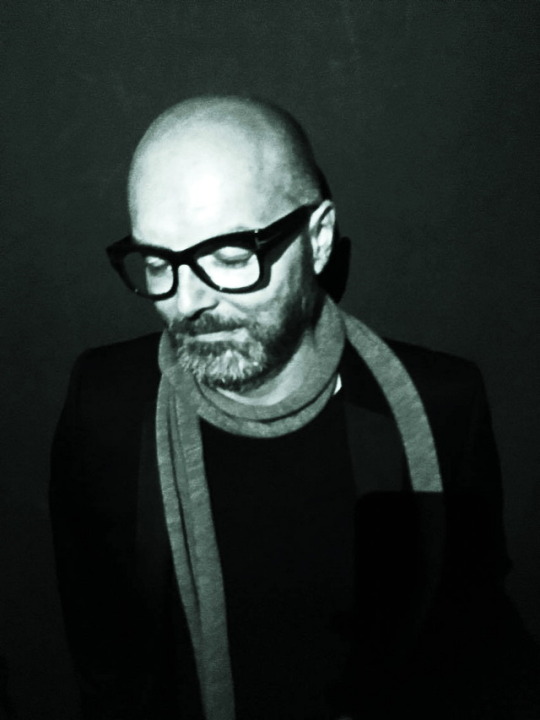


OLIVER KAPP
[ “CREAM" l “INTERTSTATE” l “LUXURY CHAIR” l INDULGE l RAYGUN l COCOON REC. l THEORY UK l GRAMMAR NL l LOGISTIC FRA l STOCKHOLM Ltd., Hamburg GER ]
brief bio of a DJ: OLIVER KAPP is a DJ and producer from Germany, born in 1969, recently based in Hamburg and strictly devoted to Techno(-Soul). He is the founder of Indulge & Raygun Records. Having grown up in the early 80’s eclectic combination of funk/house music (Lil' Louis, Derrick May), European electronica (Kraftwerk, Liaisons Dangereuses), synth-infused 80s music (Newcleus, Cerrone) … all which became infused with his own love for both house and detroit music, Kapp ended up with quite a huge mixed spectrum of musical influences.
Today, these circumstances translate all into sets where he picks apart and infuses together all the pieces of the music that he loves at its very best. As a producer, label owner and promoter, he has also found plenty of ways to express himself musically. He still runs the Vinyl labels Indulge & Raygun Records plus diverse sub-imprints like Moto-Music and has several releases on Cocoon Rec, International DJ Gigolo, Theory, Logistic, Stockholm Ltd. ect so far...! …
… without the past … there’s no phuture …
this alltime_top20 [ in no particular order! ]
01 STANLEY COWELL: Equipoise [ Galaxy GXY-5125 / Fantasy US LP| 1979 ]
02 EARTH PEOPLE [PAL JOEY aka JOSEPH LONGO]: Dance [ Underworld / Apexton Records AP-146 US 12" | 1990 ]
03 JOE HENDERSON: Black Narcissus [ Milestone Records M-9071 / Concord Music US LP | 1976 ]
04 FUTURE/PAST: Clinically _ Inclined Remix [ A1-track from "V.A. ART" Applied Rhythmic Technology ART-001 | 1991 ]
05 R-TYME [DARRYL WYNN & DERRICK MAY]: R-Theme [ B-side from "Illusion / R-Theme" Transmat MS-9 US 12" | 1989 ]
06 VIRGO [MARSHALL JEFFERSON]: Free Yourself [ Trax Records TX-114 US 12" | 1986 ]
07 ROLLING STONES: Too Much Blood _ Arthur Baker Remix [ A-side from Rolling Stones Records PR-692 / Atlantic US Promo-12" | 1984 ]
08 LIL'LOUIS [MARVIN LOUIS BURNS]: Frequency [ A-side from "Frequency / How I Feel" Dance Mania DM-008 US 12" | 1987 ]
09 LIAISONS DANGEREUSES: Liaisons Dangereuses [TIS-66.22 433-01 / TELDEC GER LP | 1981 ]
10 LIGHTMAN: Calzedon [ B2-track from "Random Abstract EP" Indulge Records ME-004 US 12" | 1998 ]
11 PRINCE & THE REVOLUTION with SHERILA E.: Erotic City [ A-side from "Erotic City / I Feel For You" WEA Records SAM-217 / Warner Brothers UK Promo-12" | 1984 ]
12 REESE [KEVIN SAUNDERSON]: Bassline [ A-side from "Inside-Out" Fragile Records VA-001 blu WL-12" | 1991 ]
13 SINNAMON [BARBARA & BERNARD FOWLER]: Thanks To You _ Instrumental / Fierce Reprise [ B-side from Becket Records BKD-508 US 12" | 1982 ]
14 JEFF MILLS: The Purpose Maker [ Axis AX-011 US Promo-12" | 1995 ]
15 GRACE JONES [BEVERLY GRACE JONES]: The Whole Lifetime Achievement [ Discogs Database | 1977 - 2011 ]
16 GALAXY 2 GALAXY [MIKE BANKS]: Journey Of The Dragons [ Underground Resistance UR-025 Submerge US Promo-2x12 | 1993 ]
17 LIL' LOUIS & THE WORLD: Black Out [ A-side from FFRR LILLP-001 UK Promo-12"| 1989 ]
18 RHYTHIM IS RHYTHIM [DERRICK MAY]: Icon [ A-side from "Icon / Kao-Tic Harmony" Transmat MS-021 | 1996 ]
19 69 [CARL CRAIG]: 4 Jazz Funk Classics [ Planet E PE69-1 US 12"| 1991 ]
20 MAURIZIO [MARK ERNESTUS - MORITZ VON OSWALD]: Domina [ Maurizio M-3 / Hard Wax GER Yel-12" | 1993 ]
bookmarks:
OLIVER KAPP FACEBOOK ll INDULGE ll RAYGUN ll BANDCAMP
RA ll MOTO MUSIC ll MUTE MUSIC ll YOUTUBE ll SOUNDCLOUD
podcasts: INVITE ll SpyInTheHouse_UTR 001 ll COMA RADIO
SpyInTheHouse_UTR_Podcast 040
recent release(s): ELECTRIC AVENUE ll OUT OF THE UNKNOWN
MANTASH EP [ Cocoon GER 12"| 2019 ]
1 note
·
View note
Text
Awake —
What are these quick shots of warmth,
Fractals of forests
That wind through my limbs?
Fragrance of olive and salt taste of skin,
Razz-tazz and clackety sound?
Figures and shapes slowly wheel past my view,
Villas and deserts, distorted faces,
Children, my children —
Distant, the pink moons of my feet.
What rules do they follow?
I think movement, they wondrously move,
Moons flutter and shake.
I probe the hills and the ruts of my face —
Now I grow large, now
I grow small, as the waves
Of sensation break over my shore.
There, a gnarled tree I remember,
A stone vessel, the curve of a hill.
What is the hour?
Some silence still sleeps
In my small sleeping room —
Is it end or beginning?
I take up my pen, dry for some years.
What should I write?
What should I think?
[…]
I knock on the door of the universe.
Here, this small villa, this table, this pen.
I ask the universe: What? and Why?
Now weakened, I must remake the world,
One grain at a time.
[…]
I knock on the door of the universe, asking:
What makes the light of the stars?
What makes the heat of my flesh?
What makes the tear shape of rain?
[…]
So much I’ve lost,
I have nothing
Except a fierce hunger
To fathom this world.
Naked, I knock on the door,
Wearing only my questions.
Great Newton, you hid in your rooms,
Outcast like me,
Careless of meals, stockings untied,
Drinker of rosewater, olive oil, beeswax —
You found the force
Between planets and sun,
Pattern of cosmic attraction,
Heard clearly the music of spheres.
You gauged the distance to stars
And the vast rooms of space,
Which were naught to the space of your mind.
You struck the door of the universe.
What raging night seized you
And screamed that the world
Must be number and rule?
This is the world of the ticking of clocks,
Menses of women and tides
Of the moon. Orbits of planets,
The swing of the pendulum, spin of the earth,
Cycles of seasons.
This is the cosmos of time and of space,
And of light rays that travel twelve billion years,
And the whale-raptured sprawl of the galaxies.
But is this not also the cosmos of life,
That rare cluster of atoms and forms,
A few grains on the beach of nonlife?
[…]
One thousand questions, and each gives
An answer, which then forms a question.
The questions and answers will meld with each other
Like colors of light,
Like the light rays that once crossed the space
Of the cosmos
And rest now in the small warmth of a hand.
I knock on the doors of the universe,
Asking: What makes the swirl
Of ghazali love songs?
And the parallel singing of loss?
And the choice to live life alone?
I surrender my calipers, rules, and clocks,
Microscopes, diodes, transistors,
Glass flasks. For how can I measure
The stroke of a passion? Or dissect a grief
With the digits of pi?
Thus, I stand naked, with nothing
Except a fierce hunger to fathom this world,
To embark on this road
Without length without breadth
- Alan Lightman
1 note
·
View note
Text
Mr g - Alan Lightman (2012)
Mr g – Alan Lightman (2012)

❤️❤️❤️💔 Alan Lightman’s preternaturally beautiful novel Mr g is a story of the creation of the universe. Following the allegory of the Christian book of Genesis, often echoing the words used (…and it was good), Mr g combines the science that is the universe and the creationist ideals. The unnamed Maker describes his use of photons and matter in the creation of our galaxy. The Maker is both…
View On WordPress
0 notes
Link
‘It Seems That I Know How the Universe Originated’
The theoretical physicist Andrei Linde may have the world’s most expansive conception of what infinity looks like.
Alan Lightman February 8, 2021
In Jorge Luis Borges’s story “The Book of Sand,” a mysterious Bible peddler knocks on the narrator’s door and offers to sell him a sacred book he came by in a small village in India. The book shows the wear of many hands. The stranger says that the illiterate peasant who gave it to him called it The Book of Sand, “because neither sand nor this book has a beginning or an end.” Opening the volume, the narrator finds that its pages are rumpled and badly set, with an unpredictable Arabic numeral in the upper corner of each page. The stranger suggests that the narrator try to find the first page. It is impossible. No matter how close to the beginning he explores, several pages always remain between the cover and his hand: “It was as though they grew from the very book.” The stranger then asks the narrator to find the end of the book. Again, he fails. “This can’t be,” says the narrator. “It can’t be, but it is,” says the Bible peddler. “The number of pages in this book is literally infinite. No page is the first page; no page is the last.” The stranger pauses and reflects. “If space is infinite, we are anywhere, at any point in space. If time is infinite, we are at any point in time.”
Sign up for The Atlantic’s daily newsletter.
Each weekday evening, get an overview of the day’s biggest news, along with fascinating ideas, images, and voices.
Email Address (required)
Thanks for signing up!
Thoughts of the infinite have mesmerized and confounded human beings through the millennia. For mathematicians, infinity is an intellectual playground, where an endless string of fractions can add up to 1. For astronomers, the question is whether outer space goes on and on and on. And if it does, as most cosmologists now believe, unsettling consequences abound. For one, there should be an infinite number of copies of each of us somewhere out there in the cosmos. Because even a situation of minuscule probability—like the creation of a particular individual’s exact arrangement of atoms—when multiplied by an infinite number of trials, repeats itself an infinite number of times. Infinity multiplied by any number (except 0) equals infinity.
Recommended Reading
The Universe Is as Spooky as Einstein Thought
Natalie Wolchover and Quanta
The Multiverse Idea Is Rotting Culture
Sam Kriss
A sphere of small particles expands and contracts against a black background.
The Big Bang May Have Been One of Many
Natalie Wolchover
Measurements of infinity are impossible, or at least impossible according to the usual notions of size. If you cut infinity in half, each half is still infinite. In an imaginary scenario known as “Hilbert’s grand hotel,” if a weary traveler arrives at a fully occupied hotel of infinite size, no problem. You simply move the guest in room 1 into room 2, the guest in room 2 into room 3, and so on ad infinitum. In the process, you’ve accommodated all the previous guests and freed up room 1 for the new arrival. There’s always room at the infinity hotel.
The cover of Alan Lightman's forthcoming book, Probable Impossibilities
This post was excerpted from Lightman’s forthcoming book.
We can play games with infinity, but we cannot visualize it. By contrast, we can visualize flying horses. We’ve seen horses, and we’ve seen birds, so we can mentally implant wings on a horse and send it aloft. Not so with infinity. Its “unvisualizability” is part of its mystique.
One of the first recorded conceptions of infinity seems to have occurred around 600 B.C., when the Greek philosopher Anaximander used the word apeiron, meaning “unbounded,” or “limitless.” For Anaximander, the Earth and the heavens and all material things were caused by the infinite, although infinity itself was not a material substance. About the same time, the Chinese employed the word wuji, meaning “boundless,” and wuqiong, meaning “endless,” and believed that the infinite was very close to nothingness. In Chinese thought, being and nonbeing, like yin and yang, are in harmony with each other—thus the kinship of infinity and nothingness. A few centuries later, Aristotle argued that infinity does not actually exist, though he conceded something he called “potential infinity.” The whole numbers are an example. For any number, you can always create a bigger number by adding 1 to it. This process can continue as long as your stamina holds out, but you can never get to infinity.
Read: We need a new word for infinite spaces
Indeed, one of the many intriguing properties of infinity is that you can’t get there from here. Infinity is not simply more and more of the finite. It seems to be of a completely different nature, although pieces of it may appear finite, such as large numbers or large volumes of space. Infinity is a thing unto itself. Everything we see and experience has limits, boundaries, tangibilities. Not so with infinity. For similar reasons, St. Augustine, Baruch Spinoza, and other theological thinkers have associated infinity with God: the unlimited power of God, the unlimited knowledge of God, the unboundedness of God. “God is everywhere, and in all things, inasmuch as He is boundless and infinite,” said Thomas Aquinas. Beyond the religious sphere of the immaterial world, physicists believe that there might be infinite things in the material world as well. But this belief can never be proved. You can’t get there from here. Most of us have our first glimmerings of infinity as children, when we look up at the night sky for the first time. Or when we go to sea, out of sight of land, and gaze upon the ocean extending on and on until it meets the horizon. But these are only glimmerings, like counting to a few thousand in Aristotle’s potential infinity. We’re overwhelmed. But we haven’t even come close.
The concept of infinity remains controversial and paradoxical today, galvanizing international conferences and heated scholarly disputes. Can physical forces ever be infinite in strength? Can space be dissected into smaller and smaller pieces indefinitely, an infinity of the small? At the other end, can physical space extend beyond galaxy after galaxy without limit? Is there an infinity between the infinity of the whole numbers and the infinity of all numbers? In May 2013, a panel of scientists and mathematicians gathered in New York City to discuss the profound conundrums surrounding infinity. William Hugh Woodin, a mathematician at the University of California at Berkeley, put it this way: “It’s kind of like mathematics lives on a stable island—we’ve built a solid foundation. Then, there’s the wild land out there. That’s infinity.”
The person on planet Earth who may have come up with the most expansive conception of spatial infinity is the theoretical physicist Andrei Linde, a professor at Stanford University. Linde works only with pencil and paper. Now 72 years old, he was born and grew up in Moscow and received his Ph.D. in physics there from the Lebedev Physical Institute. Both of his parents were physicists. He married a physicist, Renata Kallosh (also a professor at Stanford). In 1990, Linde and Kallosh moved to the United States and took up their current academic positions.
In the 1980s, Linde proposed a radical theory of the origin of the universe.
His theory, a revision of the MIT physicist Alan Guth’s 1981 theory, itself a revision of the 1927 Big Bang model, is called “eternal chaotic inflation.” The theory posits that in its infancy, our universe went through a period of highly rapid expansion, much faster than in the standard Big Bang model. In a tiny fraction of a second, a region of space smaller than an atom “inflated” to a size large enough to encompass all the matter and energy we can see today. That much of the inflation theory was articulated in Guth’s paper. Linde’s theory goes further. It proposes that our universe is necessarily one of a vast number of universes, each of which is constantly and randomly spawning new universes in an unending chain of cosmic creation, extending into the future for eternity. Some of those universes, and perhaps our own, should be infinite in extent. In our particular universe, the period of highly rapid expansion would have been completed and done with when our universe was 0.000000000000000000000000000000001 seconds old.
Read: The best explanation for everything in the universe
One could easily dismiss such speculations as science fiction. But the fantastic speculations of scientists have often found a grip on reality. Two hundred years ago, who would have thought we would be able to decipher the microscopic chemical code that creates living organisms and to alter that code as if rearranging a deck of cards? Or build tiny boxes that could communicate pictures and voices through space? Linde’s speculations are backed up by serious equations, and a number of important predictions of what I will call the “Guth-Linde inflation theory” have been confirmed by experiment. In the scientific community, Linde is widely regarded as a physicist of the first rank. He has won most of the major prizes in physics except for the Nobel.
Linde does not have a small opinion of himself. When I met him the first time, in 1987, a few years after his most important work on the inflation theory, he told me about his discovery with these words:
I easily understood what Guth was trying to do. But I did not understand how [inflation] could be done, since we have seen that the inhomogeneities [in Guth’s original theory] were large [contradicting observations]. I just had the feeling that it was impossible for God not to use such a good possibility to simplify His work, the creation of the universe … I was simultaneously discussing similar matters with [Valery] Rubakov [by telephone] … I was sitting in my bathroom, since all my children and my wife were already sleeping at the time … After the whole picture had crystallized, I was very excited. I came to my wife and I woke her up and I said: “It seems that I know how the universe originated.”
I visited Linde recently at his home in Stanford, California, to get an update on his theory and its place in our view of the world. Linde and his wife live in a lush neighborhood of winding streets, tropical gardens, and houses set up on hills. He was casually dressed in a black fleece sweater over a black T-shirt, black pants, and sandals with black socks—all in dramatic contrast with his snow-white hair. His English is good but retains a thick Russian accent. We sat at his kitchen table.
First, I asked Linde if he believes that spatial infinity truly exists. (Theoretical physicists and mathematicians are infamous for building hypothetical universes of 17 dimensions and other such surrealities.) “Do you think dinosaurs truly existed?” he replied, and paused. “Everything works as if spatial infinity exists.” Linde is careful with language. He distinguishes between reality, which we can never know, and our models and inferences about reality. He has always had a strong interest in philosophy. He remembers having debates with high-school classmates about science versus art.
I asked him how he thought about infinity, whether he attempted to visualize it. “No matter how far you go, you can go farther,” he said. Then he made an analogy to a garden: “But there’s no fence.”
Anaximander’s conception of infinity was abstract and could not reasonably be associated with physical space. In fact, the early Greek philosophers pictured the cosmos as limited in size, with an outer boundary, although they did not claim to know the actual distances.
The first person to postulate in concrete terms a spatially infinite universe seems to have been a 16th-century English mathematician and astronomer named Thomas Digges. In 1576, Digges published a new edition of his late father’s almanac, A Prognostication Everlasting. In an appendix, Digges abolished the outer sphere of the stars. At the center of his diagram is the face of the sun, with spiky rays issuing forth. Then the “orbes” of the planets. And beyond this region and extending to the edge of the page are the stars, scattered here and there through infinite space.
Digges agreed with Copernicus and Aristotle about one thing: The cosmos on the whole was at rest—a magnificent and immortal cathedral. It had existed forever and would exist forever, from the infinite past to the infinite future. This conception sat quietly for another 300 years. Even Albert Einstein’s 1917 cosmological model, based on his new theory of gravity, proposed a static and eternal universe.
Then came the Big Bang. In 1927, a Belgian priest and physicist named Georges Lemaître suggested that the previously observed outward motion of galaxies meant the universe was expanding. The cosmos was not, in fact, static. Einstein pronounced the idea “abominable.” However, two years later, Lemaître’s suggestion was confirmed by the American astronomer Edwin Hubble, who found that the speed at which other galaxies are flying away from us is proportional to their distance, as if all the galaxies were dots painted on an expanding balloon. From the viewpoint of any dot, it appears that all the other dots are moving away. No dot is the center.
Read: Why Earth’s history appears so miraculous
If you let the air out of the balloon—going backward in time—all the dots rush toward each other until you reach a moment in the past when all the dots are on top of each other. That moment is the “beginning” of the universe, the so-called Big Bang, t = 0. By measuring the rate at which the universe is expanding today, we can estimate when the universe “began”—about 14 billion years ago. Since that moment, the universe has been expanding, thinning out, and cooling. It is important to note that the balloon analogy is only an analogy. In particular, unlike a balloon, the universe could be infinite in extent. What astronomers mean when they say the universe is expanding is that the distance between any two galaxies is increasing with time.
The Big Bang model is more than an idea. It is a detailed set of equations describing how the universe has evolved since t = 0, specifying in quantitative detail such things as the average density and temperature of the universe at each point in time. The model has been supported by several pieces of evidence. For one, the age of the universe as calculated by its rate of expansion approximately agrees with the age of the oldest stars, calculated by our understanding of stellar astrophysics. For another, the Big Bang model predicts that there should be a flood of radio waves coming from all directions in outer space and produced when the universe was about 300,000 years old. That predicted flood of radio waves, called “cosmic background radiation,” was discovered in 1965. There are other confirmed predictions as well, such as the observed proportions of the lightest chemical elements. The Big Bang theory does not say whether space and time existed before the cosmic balloon began expanding. That profound question would be left to Linde and others.
Linde would have heard about the Big Bang model as a physics university student in Moscow in the late 1960s, if not earlier. However, he was trained not as a cosmologist but as a particle physicist, as was Alan Guth. Particle physicists study nature at the smallest sizes, while cosmologists study it at the largest. The two branches of physics seemingly had little to do with each other. But in the early 1970s, Linde became interested in certain phenomena that occur at extremely high temperatures, far beyond what can be created in the laboratory, temperatures that could have existed only in the fantastically hot conditions of the infant universe. Describing one of his theories at the time, a prelude to his work on inflation, Linde said, “At the first glance, this theory seemed to be too exotic. We developed it in 1972, but for two years nobody believed us. People were laughing.” But in 1974, some American physicists confirmed the main conclusions.
This response to Linde’s early work—first doubts, and then often acceptance—seems to have been a pattern in his career. In our conversation, we talked about the manner in which scientific theories, and especially maverick theories, are confronted by the scientific community. Linde described what he calls a strong “sociological” effect: the biases and prejudices of scientists, their institutional stature, and the inherent caution of the scientific enterprise. Linde himself is not a cautious person. His colleagues describe him as someone who shoots from the hip with lots of ideas, some right and some wrong. He is a person of extreme self-confidence, a showman in his popular lectures and articles.
By the early 1970s, some physicists were worrying about problems with the Big Bang model, despite its successes. One lasting concern, for example, was that the cosmic radio waves are highly uniform in temperature, no matter what direction we’re looking in.
There are two possible explanations for this: Either the universe began in an extremely uniform condition, with all parts at the same temperature, or any initial non-uniformities were smoothed out in time, much as hot and cold water in a bathtub will come to the same temperature by exchanging heat. However, heat exchange takes time. According to the Big Bang model, the different parts of the universe we see today would not have had enough time to exchange heat during the first 300,000 years of the universe, when the cosmic radio waves were created. Thus, the second explanation doesn’t work. On the other hand, physicists consider the first explanation unpalatable because it sweeps the problem under the rug: “It is what it is because it was what it was.” In general, physicists detest such arguments.
The Guth-Linde inflation theory solves the puzzle of the cosmic radio waves, as well as other problems with the Big Bang model. During the period when the infant universe was expanding at blinding speed, a very tiny patch of space, tiny enough that all its parts could have homogenized, would have quickly inflated to encompass today’s entire observable universe. No matter what the initial conditions, inflation would have produced a universe of uniform temperature.
Most important, the inflation theory explains why such inflation would occur and includes equations for the various energies and forces involved. The key ingredient of the theory, and the cause of the extremely rapid expansion of the infant cosmos, is a kind of energy called a “scalar field.” Most energy fields, like gravity, are invisible, yet they can exert forces. Some scalar fields produce a repulsive gravitational force: They push things apart rather than pull things together.
The Guth-Linde theory was developed over a period of several years, from 1979 to 1986, beginning with work by Alexei Starobinsky in Moscow. During that period, problems arose and were fixed, and physicists proposed various versions of the theory.
One of Linde’s ideas is that in the early universe, scalar field energy should be constantly created at various magnitudes due to quantum effects. A strange aspect of quantum physics is that energy and matter can suddenly appear out of nothing for short periods of time. If you could examine space with a strong enough microscope, you would find that it is constantly fluctuating, seething with ghost-like particles and energies that randomly appear and disappear. Quantum phenomena are normally apparent only in the tiny world of the atom, but near t = 0 the entire observable universe was smaller than an atom. If at a certain point in the infant universe sufficient scalar field energy had materialized, its repulsive gravitational effect would have caused space to expand so rapidly that an entire universe would have been created. Since such quantum fluctuations would have been going on at random places and times—this is the “chaos” in Linde’s eternal chaotic inflation theory—new universes would have been constantly forming.
Indeed, Linde’s theory requires that we redefine what we mean by universe.
Some physicists now take the word to mean a region of space that will be quarantined into the infinite future, that may have been in contact with other parts of the cosmos in the past but can never communicate with the rest of the cosmos again. Because of the mind-bending way in which gravity alters the geometry of space in Einstein’s theory, there could conceivably be multiple universes, each infinite in extent. Physicists predict that the new universes created by quantum fluctuations have a wide range of properties: Some might be infinite in extent, others finite; some might have the right conditions to make stars and planets and life; others might be lifeless and unformed deserts of subatomic particles and energy; some might even have different dimensions than our own universe. In this vision, universes endlessly spawn new universes, each with its own Big Bang beginning. Our t = 0 would not be the beginning of space and time in the larger cosmos, only in our particular universe.
Read: How to measure all the starlight in the universe
In some of his papers, Linde represents his eternal chaotic inflation model as a thick hedge of branching bulbs, each bulb a separate universe, connected to ancestor bulbs and descendant bulbs by thin tubes. The entire hedge might be called the “cosmos.” Sometimes, it’s called the “multiverse.” It is startling to look at Linde’s picture and realize that each bulb represents an entire universe, some containing stars and planets, cities, office buildings, trees, ants or ant-like creatures, sunsets. Unfathomable—yet a human mind has fathomed this thick hedge of the imagination. “It can’t be, but it is,” says the Bible peddler in “The Book of Sand.”
One cannot resist comparing Linde’s “map of the universes” to the Babylonian “Map of the World,” one of the oldest-known maps drawn by human beings, found on a clay tablet in present-day Iraq and now housed in the British Museum. In this ancient map of the known world (ca. 600 B.C.), the city of Babylon is perched on the Euphrates River. Pictured and named (in Akkadian) are a few other cities, including Urartu, Susa, Assyria, and Habban; a mountain; and a circular ocean (labeled “bitter river”) enveloping the inhabited cities.* Finally, spikes radiating out from the circular ocean represent some unnamed and unknown outer regions. Could one compare these unnamed spikes to the unnamed bulbs in Linde’s map? Both lie far beyond the realm of physical exploration. Both require leaps of the imagination. Yet Linde’s bulbs follow as logical consequences of certain mathematical equations. As Linde would acknowledge, those equations are also works of the human imagination, models of reality instead of reality itself. Linde’s ideas are at once visionary and grounded in logical thinking. Although mathematically proficient in the manner of all theoretical physicists, Linde described himself to me as more intuitive than technical, a Steve Jobs more than a Steve Wozniak.
The Babylonian Map of the World is a static picture. By contrast, Linde’s map of the universes suggests evolution and change, movement. The various universes spawn each other in time.
I do not feel unlimited looking at Linde’s map. Instead, I feel small and insignificant, like the Bible peddler, who says that if space is infinite, we are nowhere in space, nowhere in time. How can anything we do be of consequence when we are nowhere in space, nowhere in time, when our brief lives are lived out on one small planet, itself one of zillions of planets in a universe that might be infinite in size, and our entire universe simply one bulb in Linde’s thick hedge of universes? On the other hand, there might be something majestic in being a part, even a tiny part, of this unfathomable chain of being, this infinitude of existence. We pass away, our sun will burn out, our universe might become a dark and lifeless void a hundred billion years from now—but, according to Linde, other universes are constantly being born, some surely with life, renewing something precious that cannot be named.
It is unlikely that we will ever know if Linde’s infinity of universes exists. But the rest of the Guth-Linde inflation theory is being actively tested today. One of the most important tests, Linde explained to me, is a search for something called “B-mode polarization,” a slight twisting pattern in the vibrations of the cosmic radio waves predicted by the inflation theory.
Refined measurements of the B-mode polarization are now being conducted by the POLARBEAR experiment in the Atacama Desert in northern Chile and by the BICEP experiment at the South Pole, among others. These experiments are international collaborations, including more than a dozen institutions in the United States, England, Wales, France, Japan, and Canada. Thousands of scientists worldwide, both theorists and experimentalists, are actively working to test the inflation theory and to probe its consequences. Almost all cosmologists today accept it as the best working hypothesis we have to describe the first moments of our universe. The theory must be considered a triumph of the human mind.
Yet Andrei Linde does not appear to be a man completely at peace with his place in the world. Something eludes him. When he talks about the history of the inflation theory, he seems still to be defending his ideas against naysayers and rival theorists, still competing with Guth and others for priority of discovery, still infused with a powerful desire for vindication. In my conversations with him and in his review articles and autobiographical statements, he portrays himself as someone who heroically developed a new view of the cosmos, struggled against doubters, corrected other people’s mistakes and misunderstandings, and was often misunderstood himself. One story he enjoys telling is about a lecture that Stephen Hawking gave at the Sternberg Astronomical Institute in Moscow in October 1981. Linde was asked to translate for the Russian audience. At that time, various physicists, including Hawking, were trying to patch up a serious problem (too much inhomogeneity) in Guth’s original inflation theory. Linde had devised his own inflation theory, a revision of Guth’s, but it was not yet published. During the lecture, Hawking would mumble a few seemingly incoherent words, one of his graduate students familiar with his speech would translate into understandable English, and then Linde would translate into Russian. With this painfully slow process under way, Hawking announced that Linde had a good idea, but it was wrong. For the next half hour, he proceeded to explain why it was wrong. All the while, Linde had to translate. At the end of the lecture, Linde told the audience, “I have translated, but I disagree.” He then went with Hawking to another room of the building, closed the door, and explained to him more details of his new theory. According to Linde, Hawking had to admit that he was right after all. Linde recalled that Hawking “was sitting there about one hour and a half and saying to me the same words: ‘But you did not tell this before. But you did not tell this before.’”
Perhaps Linde’s ego and bravado were essential for the conception of his phantasmagoric cosmology. Other scientists with equal brainpower but more cautious dispositions have not ventured nearly so far in their theories of the world. The equations are the equations, but they must be imagined and interpreted in the human mind, a particular human mind, a complex universe itself, endlessly variable in its quirks and possibilities. Then again, any scientist who works on the origin of our universe—and hundreds do worldwide—must possess a certain amount of chutzpah.
“At the beginning, I was like a young kid, making discoveries,” Linde told me.
Now I feel a deep responsibility. There are hundreds of people working on the theory of inflation and lots [of expensive] experiments to test it. You feel yourself a bit heavy with responsibility … I would hate to die just being a physicist. I enjoy photography. That allows me to feel another part of my brain. There is something beyond physics that is not measurable … Photography is my art. You need to have a first priority and then a second priority. When I was 60, someone gave me a camera. With a camera, you can produce beauty. I can produce things that are better than what I see in museums. You see, I am now talking like an arrogant American. I am producing images that make my heart sing—both my photographs and the computer graphics illustrating inflation. I am among the first to see the beauty in it. Without the part of my mind beyond physics, I would be unable to create the computer graphics of cosmology.
Linde went to his computer and eagerly showed me his Flickr website, where he has posted hundreds of his photographs. “Sit down,” he said, and offered me a seat near the screen. One of his photographs, titled “Alcazar Dreams,” depicts a subterranean pool beneath the Patio del Crucero in Seville, Spain. A series of stone arches, glowing in eerie orange light, bend over the elongated pool, one after another after another out to a distant vanishing point. Another image, titled “Hide Thy Face,” is an extreme close-up of the interior of an orchid. Around the outside edges unfolds a diaphanous blue halo. At the middle of the flower is a two-chambered yellow heart covered with red speckles, with white-and-red-striped arms emerging from it, and further out pale green and yellow petals. Altogether, an intricate jewel, a tiny splash in infinity.
This article was excerpted from Lightman’s forthcoming book, Probable Impossibilities.
* This article previously misstated the language in which the Babylonian "Map of the World" was written and the material from which it was made.
👇 📚 👇
https://www.theatlantic.com/science/archive/2021/02/to-infinity-and-beyond/617965/?utm_source=pocket-newtab
0 notes
Text
Muse List!
Please see below for available muses and their activity status!
The * indicates muses which are most active.
Some muses are Private which means they’re not available for general askbox memes, but they are open for plotted threads. Some are also low activity and thus responses from them will be slower.
Multiple verses available, please see here!
There’s also a Muse Interest Checker here!
And a wishlist here.
* * *
Original Characters
* * *
Drew MacFusty *
Harry Potter, Dragon Wrangler

Tobias Bellamy *
Fandomless, Mortician

Camniel *
Good Omens, Archangel

* * *
Canon Characters
* * *
Villanelle
Killing Eve ; Private / By Plotted Request

Agent J
Men in Black

Nicholas Angel
Hot Fuzz

Count Dracula *
BBC Dracula, Canon Divergent

Irene Adler
Ritchie Holmes

Sherlock Holmes *
Elementary

Viago
What We Do In The Shadows

Aziraphale *
Good Omens

Peter Quill aka Star-Lord *
Guardians of the Galaxy

Ego
Guardians of the Galaxy
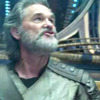
Cal Lightman
Lie To Me ; Private / By Plotted Request

Malcolm Tucker *
The Thick Of It

Hercule Poirot
ITV’S Poirot. Private / By Plotted Request.

Alice Kingsleigh
Alice in Wonderland (Movies & Novel)

Raymond Stantz *
Ghostbusters

Jillian Holtzmann *
Ghostbusters: Answer the Call

Elise Rainier *
Insidious

Jonathan Carnahan *
The Mummy

24 notes
·
View notes